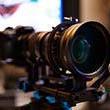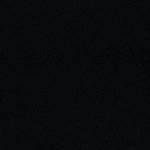
Jacek
-
Posts
248 -
Joined
-
Last visited
Reputation Activity
-

-
 Jacek got a reaction from Alborat in TIP: Fader ND Filter = Polarising Filter (for £8.95)
Jacek got a reaction from Alborat in TIP: Fader ND Filter = Polarising Filter (for £8.95)
Just want to show you my solution to use faderND filter as polarising filter at the same time (cost: £8.95).
It is very simple, but surprisingly hard to find such informations in the net.
If you have faderND filter, it is (always?) made from 2 polarising filters. Like mine:
When you use it, the problem is, that you rotate front polarizer and stop it on random angle, so you have no control over which polarization you accept (most importantly - which polarisation you completely cut off). So it is not only useless as Polariser, but sometimes it can cut off the reflections which shouldn't be cut.
The solution is simple - buy a rotating spacer ring like mine (here put on a 43-52 step up ring for 52mm FaderND):
I bought mine here (they have really cheap Europe shipping) - http://srb-photographic.co.uk/rotating-spacer-rings-1126-c.asp
If you use step-up ring - put the spacer ring after step-up ring (if you put it before, you can introduce a lot of vignetting).
How to use it?:
Screw Rotating spacer ring and than your FaderND. When you set up all parameters, first rotate FaderND to proper ND level (you have to hold spacer ring not to rotate, because it is rotating much lighter (in my case)), and then rotate whole filter with your new spacer ring to adjust first polarizer angle (spacer ring rotates really light, so it is impossible [in my case] to change ND level by accident).
To make it even simpler, I made a test (LCD monitor is polarised so it is very helpfull) and marked a vertical and horizontal position of front polarizer with lacquer dot (if it's on top, I know that it's close to vertical/horizontal polarization):
It is really very fast and simple to use. Don't throw your money on additional polarizer (and don't add additional glass in front of your expensive lens) you have it already, but you wasn't using it.
NOTE: Spacer ring adds some space before filter, so can make some vignetting if the filter is not big enough for your focal length.
-
 Jacek got a reaction from tellure in TIP: Fader ND Filter = Polarising Filter (for £8.95)
Jacek got a reaction from tellure in TIP: Fader ND Filter = Polarising Filter (for £8.95)
Point the camera on white lcd screen (like Eoshd forum :)) and rotate polarizer to see black screen on camera (deepest black in the middle of the screen). It's good to confirm polarization on some reflective surface, couse I'm not sure if all lcd screens are polarized vertically/horizontally. So you have first red dot. Second will be just 90° from first one (or you can rotate screen or camera 90° and again find black screen).
vertical or horizontal (not sure which is which) are your starting points to clean water reflections (see through), hide wet/polished horizontal surfaces reflections or the same for vertical surfaces - like hide/show somebodys reflection in windows..
Any reflective horizontal/vertical surface (walls, floors, water, buildings..) will generate in most situations vertically or horizontally polarized light, so these are most used filter polarizer positions to hide or let through these reflections.
-
 Jacek got a reaction from Liam in TIP: Fader ND Filter = Polarising Filter (for £8.95)
Jacek got a reaction from Liam in TIP: Fader ND Filter = Polarising Filter (for £8.95)
Just want to show you my solution to use faderND filter as polarising filter at the same time (cost: £8.95).
It is very simple, but surprisingly hard to find such informations in the net.
If you have faderND filter, it is (always?) made from 2 polarising filters. Like mine:
When you use it, the problem is, that you rotate front polarizer and stop it on random angle, so you have no control over which polarization you accept (most importantly - which polarisation you completely cut off). So it is not only useless as Polariser, but sometimes it can cut off the reflections which shouldn't be cut.
The solution is simple - buy a rotating spacer ring like mine (here put on a 43-52 step up ring for 52mm FaderND):
I bought mine here (they have really cheap Europe shipping) - http://srb-photographic.co.uk/rotating-spacer-rings-1126-c.asp
If you use step-up ring - put the spacer ring after step-up ring (if you put it before, you can introduce a lot of vignetting).
How to use it?:
Screw Rotating spacer ring and than your FaderND. When you set up all parameters, first rotate FaderND to proper ND level (you have to hold spacer ring not to rotate, because it is rotating much lighter (in my case)), and then rotate whole filter with your new spacer ring to adjust first polarizer angle (spacer ring rotates really light, so it is impossible [in my case] to change ND level by accident).
To make it even simpler, I made a test (LCD monitor is polarised so it is very helpfull) and marked a vertical and horizontal position of front polarizer with lacquer dot (if it's on top, I know that it's close to vertical/horizontal polarization):
It is really very fast and simple to use. Don't throw your money on additional polarizer (and don't add additional glass in front of your expensive lens) you have it already, but you wasn't using it.
NOTE: Spacer ring adds some space before filter, so can make some vignetting if the filter is not big enough for your focal length.
-
 Jacek got a reaction from andrgl in TIP: Fader ND Filter = Polarising Filter (for £8.95)
Jacek got a reaction from andrgl in TIP: Fader ND Filter = Polarising Filter (for £8.95)
Just want to show you my solution to use faderND filter as polarising filter at the same time (cost: £8.95).
It is very simple, but surprisingly hard to find such informations in the net.
If you have faderND filter, it is (always?) made from 2 polarising filters. Like mine:
When you use it, the problem is, that you rotate front polarizer and stop it on random angle, so you have no control over which polarization you accept (most importantly - which polarisation you completely cut off). So it is not only useless as Polariser, but sometimes it can cut off the reflections which shouldn't be cut.
The solution is simple - buy a rotating spacer ring like mine (here put on a 43-52 step up ring for 52mm FaderND):
I bought mine here (they have really cheap Europe shipping) - http://srb-photographic.co.uk/rotating-spacer-rings-1126-c.asp
If you use step-up ring - put the spacer ring after step-up ring (if you put it before, you can introduce a lot of vignetting).
How to use it?:
Screw Rotating spacer ring and than your FaderND. When you set up all parameters, first rotate FaderND to proper ND level (you have to hold spacer ring not to rotate, because it is rotating much lighter (in my case)), and then rotate whole filter with your new spacer ring to adjust first polarizer angle (spacer ring rotates really light, so it is impossible [in my case] to change ND level by accident).
To make it even simpler, I made a test (LCD monitor is polarised so it is very helpfull) and marked a vertical and horizontal position of front polarizer with lacquer dot (if it's on top, I know that it's close to vertical/horizontal polarization):
It is really very fast and simple to use. Don't throw your money on additional polarizer (and don't add additional glass in front of your expensive lens) you have it already, but you wasn't using it.
NOTE: Spacer ring adds some space before filter, so can make some vignetting if the filter is not big enough for your focal length.
-
 Jacek got a reaction from Mattias Burling in TIP: Fader ND Filter = Polarising Filter (for £8.95)
Jacek got a reaction from Mattias Burling in TIP: Fader ND Filter = Polarising Filter (for £8.95)
Just want to show you my solution to use faderND filter as polarising filter at the same time (cost: £8.95).
It is very simple, but surprisingly hard to find such informations in the net.
If you have faderND filter, it is (always?) made from 2 polarising filters. Like mine:
When you use it, the problem is, that you rotate front polarizer and stop it on random angle, so you have no control over which polarization you accept (most importantly - which polarisation you completely cut off). So it is not only useless as Polariser, but sometimes it can cut off the reflections which shouldn't be cut.
The solution is simple - buy a rotating spacer ring like mine (here put on a 43-52 step up ring for 52mm FaderND):
I bought mine here (they have really cheap Europe shipping) - http://srb-photographic.co.uk/rotating-spacer-rings-1126-c.asp
If you use step-up ring - put the spacer ring after step-up ring (if you put it before, you can introduce a lot of vignetting).
How to use it?:
Screw Rotating spacer ring and than your FaderND. When you set up all parameters, first rotate FaderND to proper ND level (you have to hold spacer ring not to rotate, because it is rotating much lighter (in my case)), and then rotate whole filter with your new spacer ring to adjust first polarizer angle (spacer ring rotates really light, so it is impossible [in my case] to change ND level by accident).
To make it even simpler, I made a test (LCD monitor is polarised so it is very helpfull) and marked a vertical and horizontal position of front polarizer with lacquer dot (if it's on top, I know that it's close to vertical/horizontal polarization):
It is really very fast and simple to use. Don't throw your money on additional polarizer (and don't add additional glass in front of your expensive lens) you have it already, but you wasn't using it.
NOTE: Spacer ring adds some space before filter, so can make some vignetting if the filter is not big enough for your focal length.
-
 Jacek got a reaction from Inazuma in TIP: Fader ND Filter = Polarising Filter (for £8.95)
Jacek got a reaction from Inazuma in TIP: Fader ND Filter = Polarising Filter (for £8.95)
Just want to show you my solution to use faderND filter as polarising filter at the same time (cost: £8.95).
It is very simple, but surprisingly hard to find such informations in the net.
If you have faderND filter, it is (always?) made from 2 polarising filters. Like mine:
When you use it, the problem is, that you rotate front polarizer and stop it on random angle, so you have no control over which polarization you accept (most importantly - which polarisation you completely cut off). So it is not only useless as Polariser, but sometimes it can cut off the reflections which shouldn't be cut.
The solution is simple - buy a rotating spacer ring like mine (here put on a 43-52 step up ring for 52mm FaderND):
I bought mine here (they have really cheap Europe shipping) - http://srb-photographic.co.uk/rotating-spacer-rings-1126-c.asp
If you use step-up ring - put the spacer ring after step-up ring (if you put it before, you can introduce a lot of vignetting).
How to use it?:
Screw Rotating spacer ring and than your FaderND. When you set up all parameters, first rotate FaderND to proper ND level (you have to hold spacer ring not to rotate, because it is rotating much lighter (in my case)), and then rotate whole filter with your new spacer ring to adjust first polarizer angle (spacer ring rotates really light, so it is impossible [in my case] to change ND level by accident).
To make it even simpler, I made a test (LCD monitor is polarised so it is very helpfull) and marked a vertical and horizontal position of front polarizer with lacquer dot (if it's on top, I know that it's close to vertical/horizontal polarization):
It is really very fast and simple to use. Don't throw your money on additional polarizer (and don't add additional glass in front of your expensive lens) you have it already, but you wasn't using it.
NOTE: Spacer ring adds some space before filter, so can make some vignetting if the filter is not big enough for your focal length.
-
 Jacek got a reaction from Cinegain in TIP: Fader ND Filter = Polarising Filter (for £8.95)
Jacek got a reaction from Cinegain in TIP: Fader ND Filter = Polarising Filter (for £8.95)
Just want to show you my solution to use faderND filter as polarising filter at the same time (cost: £8.95).
It is very simple, but surprisingly hard to find such informations in the net.
If you have faderND filter, it is (always?) made from 2 polarising filters. Like mine:
When you use it, the problem is, that you rotate front polarizer and stop it on random angle, so you have no control over which polarization you accept (most importantly - which polarisation you completely cut off). So it is not only useless as Polariser, but sometimes it can cut off the reflections which shouldn't be cut.
The solution is simple - buy a rotating spacer ring like mine (here put on a 43-52 step up ring for 52mm FaderND):
I bought mine here (they have really cheap Europe shipping) - http://srb-photographic.co.uk/rotating-spacer-rings-1126-c.asp
If you use step-up ring - put the spacer ring after step-up ring (if you put it before, you can introduce a lot of vignetting).
How to use it?:
Screw Rotating spacer ring and than your FaderND. When you set up all parameters, first rotate FaderND to proper ND level (you have to hold spacer ring not to rotate, because it is rotating much lighter (in my case)), and then rotate whole filter with your new spacer ring to adjust first polarizer angle (spacer ring rotates really light, so it is impossible [in my case] to change ND level by accident).
To make it even simpler, I made a test (LCD monitor is polarised so it is very helpfull) and marked a vertical and horizontal position of front polarizer with lacquer dot (if it's on top, I know that it's close to vertical/horizontal polarization):
It is really very fast and simple to use. Don't throw your money on additional polarizer (and don't add additional glass in front of your expensive lens) you have it already, but you wasn't using it.
NOTE: Spacer ring adds some space before filter, so can make some vignetting if the filter is not big enough for your focal length.
-
 Jacek got a reaction from Mat Mayer in Sell my bmpcc for a lx100?
Jacek got a reaction from Mat Mayer in Sell my bmpcc for a lx100?
I'm using LX100 since its release (almost a year):
- it's super easy to take a shot: image stabilization, autofocus before recording, zoom (from quite wide to first portrait fov) - few seconds to move/reframe and start recording.
- low-light performance is good: (almost 4/3 sensor + F1.8 on wide end) it is like "what you see is what you can get" - no night vision, but human vision.
- when setting sharpness and noise reduction all the way down (-5) the noise (when visible) looks quite filmic. If you also don't move the camera handheld and know hot to frame a shot it looks nice (not videoish)
- dynamic range is ok most of the time, but there are situations when it's too low (and you have to use tricks to save a shot - overexpose, soften highlight in post ...).
- perfect details
- good battery
- grading is very limited. I do often can't get the colors/look I want. Especially difficult when people are close (skintones).
Don't have much experience with bmpcc, but I would say:
- you will have better shots with lx100 in: wide scenes with lot of things in frame, panoramas; 'artificial' things - like buildings, cars, instruments; places where you don't have time to set up the camera (just take it out and record);
- you will have better shots with bpmcc in: organic scenes - people, nature; when you need extreme dynamic range.
- in low-light it's equal I think: it would be really hard with bpmcc to get better than lx100 with wide fov 1.8 (24-28mm equivalent) - it not only have bright lens, but can use (quite clean and with filmic grain) high ISO, especially when downsizing to fullHD.
In summary: lx100 is super easy (so also fun) to use and get stunning results in 'artificial' and wide scenes BUT is very limited in grading (especialy 'organic' scenes like people) and getting filmic colors - you get OK colors, but not the mood you want (It is really a big problem).
-
 Jacek got a reaction from maxotics in Torn between 3 lovers; GH4/A7S/NX1
Jacek got a reaction from maxotics in Torn between 3 lovers; GH4/A7S/NX1
I had similar problem...
Bought lx100.
-
 Jacek got a reaction from tosvus in Torn between 3 lovers; GH4/A7S/NX1
Jacek got a reaction from tosvus in Torn between 3 lovers; GH4/A7S/NX1
I had similar problem...
Bought lx100.
-
 Jacek reacted to Andrew Reid in Panasonic buying advice : LX100 or FZ1000 ?
Jacek reacted to Andrew Reid in Panasonic buying advice : LX100 or FZ1000 ?
The FZ1000 is all about the zoom range. If you need to go really long on the zoom then get the FZ1000. In all other respects the LX100 is better aside from the lack of slow-mo... and a few minor missing menu options. No CineLike D either.
LX100 review part 1 http://www.eoshd.com/2014/11/shooting-4k-pocket-camera-exceptional-panasonic-lx100/
FZ1000 review http://www.eoshd.com/2014/11/panasonic-fz1000-review-bargain-4k-super-zoom/
-
 Jacek got a reaction from toxotis70 in Panasonic (LX100) neutral settings
Jacek got a reaction from toxotis70 in Panasonic (LX100) neutral settings
Because I thought (based on my initial tests) that I can recover more details with Shadow/Highlight than with Contrast...
But because You asked, I made more detailed tests and I realized I was wrong.
I tested shadows and highlight recovering in high dynamic scene with:
1. Contrast:0 + Highlight/Shadow:0
2. C:-5 + H/S:0
3. C:0 + H/S:-2/+2
4. C:0 + H/S:-5/+5
Here are my observations:
- Clipping is exacly the same in all tests. No additional data captured in all tests.
- Test 2 and 3 give similar results (Test 2 has little bit less contrast): C:-5 is almost the same effect as H/S:-2/+2
- Recovered deep shadows are: 1. worst (noise blockiness, blue channel clipping), 2. = 3. better, 4. best
- Noise level in mid-tones is similar in all tests when final contrast is matched. Scary noise :) in flat images disappears when contrast is reversed (Or appears when lowering contrast in post).
Conclusions:
- Lowering contrast or H/S curve does not affect overall camera dynamic range.
- Looks like Contrast and H/S are altered after camera captured the image but before encoding (that's why we can get better shadows after lowering contrast).
- You can get nicer deep shadows (mostly when you want to brighten them) by lowering contrast (no matter if by Contrast or H/S curve) only because the shadows move to the right on the histogram.
The differences between 'normal' picture profiles (Natural, Standard, Portrait) are small and difficult to measure and I don't have time to do that. By simple comparison they just look like small Contrast/Saturation tweaks, nothing more.
So in normal situation, especially when you have enough dynamic range to move the histogram to the right, there is no reason to lower contrast - you only loose some color information. You can lower the contrast in post with same effect (Just try - you can push it really hard in post).
Lowering contrast can improve only shadow noise. It is usefull when most of the histogram is on the left (or important things are in shadows) or if you want to brighten the shadows in post. The darker the shadows, the more usefull is moving them to the right on the histogram.
My default settings will be for now:
Picture profile: Standard
Contrast: 0 (or -5 just in case to have more control over shadows in post)
Sharpness: -5
Noise reduction: -5
Saturation: 0?
Shadow/Highlight: 0/0
When need to brighten deep shadows in post: Contrast up to -5 and then additionally S/H up to +5/-5
-
 Jacek got a reaction from Eric Cote in Panasonic (LX100) neutral settings
Jacek got a reaction from Eric Cote in Panasonic (LX100) neutral settings
I'm aware of that, but here the image is not becoming too flat (I'm using Contrast:0) and I like the results. I would only advice not to push it too far, but mainly because of noise (the color shift is still small at S/H:+5/-5).
It is the same 8bit codec as in GH4. People are using really flat profiles with GH4 - tuning not only highlights/shadows but also Master Pedestal and CineLikeD with low Contrast so don't say we are going too flat with these settings here - go and criticize GH4 users ;).
Wrong topic. Deleting.. :lol:
-
 Jacek got a reaction from Eric Cote in Panasonic (LX100) neutral settings
Jacek got a reaction from Eric Cote in Panasonic (LX100) neutral settings
Indeed a lot of people are using Natural profile. Thanks for the hint, I'll try it too.
I did some more tests with Highlight/Shadow inverted S curve.
Deep shadows are improved, but it introduces also more noise in midtones. So you should be careful with Shadows part and push it to +5 only when you have something important in deep shadow. Highlights part is less destructive and safer to use.
To bring back proper colors you will need to lower saturation (in camera or in post), especially noticable when restoring the contrast in post. The stronger the curve, the lower saturation is needed to maintain colors in final image (otherwise they quickly become oversaturated and bright like neon).
I do often need to brighten the shadows a little, so I'll probably use something like Shadow/Highlight: +2/-5... (and lower saturation accordingly to have less work in post)
So for now it's something like:
Picture profile: Natural
Contrast: 0
Sharpness: -5
Noise reduction: -5
Saturation: -3 (or 0)
Shadow/Highlight: +2/-5 (or 0/0)
-
 Jacek got a reaction from tosvus in Panasonic (LX100) neutral settings
Jacek got a reaction from tosvus in Panasonic (LX100) neutral settings
I'm aware of that, but here the image is not becoming too flat (I'm using Contrast:0) and I like the results. I would only advice not to push it too far, but mainly because of noise (the color shift is still small at S/H:+5/-5).
It is the same 8bit codec as in GH4. People are using really flat profiles with GH4 - tuning not only highlights/shadows but also Master Pedestal and CineLikeD with low Contrast so don't say we are going too flat with these settings here - go and criticize GH4 users ;).
Wrong topic. Deleting.. :lol:
-
 Jacek got a reaction from tosvus in Panasonic (LX100) neutral settings
Jacek got a reaction from tosvus in Panasonic (LX100) neutral settings
I'm trying to find most neutral settings on my LX100 (partially probably common with GH4). By neutral I mean getting most data from sensor not modified digitally after captured (by camera soft).
What I think after small tests:
Contrast: 0
- it looks like -5 is not getting/protecting any additional data. When I lower contrast in post, I get the same shadow/highlight data as -5. It looks like the camera is lowering the contrast after image is burned.
Sharpness: -5
- sharpening looks like pure 'post'-sharpening. I can get the same pixel level image as 0 after sharpening -5 in post.
Noise reduction: -5
- noise looks nice and I see recovered data (especially with sharpness -5).
Saturation: 0?
- 0 colors look natural and I don't see a difference when lowering in post vs -5 when needed. But not sure how to test it more detailed.
Picture profile: Standard.
- More flat Portrait looks like mostly just Standard with lower contrast..
Highlight/Shadow curve: -5/+5 if needed.
- In opposite to lowering contrast, here I can see some recovered both highlights and shadows. Not much of them, but always something. The noise in shadows people are complaining about is lower (looks better) than by raising shadows in post instead. As side effect, the colors look different, not sure if easily correctable in post.
Do you have any other findings/ideas? Also in GH4 cause probably they are similar.
-
 Jacek got a reaction from tosvus in Shooting with a 4K pocket camera - the exceptional Panasonic LX100
Jacek got a reaction from tosvus in Shooting with a 4K pocket camera - the exceptional Panasonic LX100
I have checked many reviews, samples and specification before I bought this camera. If you would do the same, you would know about the lack of HDMI monitoring. Be angry on yourself.
It's always like that. When famous photographer says that camera X is excellent for portraits, I would still check if it has all features I need, like controls or focal length I'm using most often... -
 Jacek got a reaction from Eric Cote in Shooting with a 4K pocket camera - the exceptional Panasonic LX100
Jacek got a reaction from Eric Cote in Shooting with a 4K pocket camera - the exceptional Panasonic LX100
I have checked many reviews, samples and specification before I bought this camera. If you would do the same, you would know about the lack of HDMI monitoring. Be angry on yourself.
It's always like that. When famous photographer says that camera X is excellent for portraits, I would still check if it has all features I need, like controls or focal length I'm using most often... -
 Jacek got a reaction from nahua in Shooting with a 4K pocket camera - the exceptional Panasonic LX100
Jacek got a reaction from nahua in Shooting with a 4K pocket camera - the exceptional Panasonic LX100
It is funny how different needs do people have. LX100 is currently the best camera on the market for my needs (ordering this weekend). It will be my only camera (for both video and photo) for next few years.
You should say: "For my needs LX100 is overrated and overestimated.". When you say "The camera is bad.. It is my opinion." it sounds like you think that it's bad for everyone (or almost everyone). If you think like that - you are wrong. If not - you should correct your statement to cool emotions.
-
 Jacek got a reaction from Cinegain in Shooting with a 4K pocket camera - the exceptional Panasonic LX100
Jacek got a reaction from Cinegain in Shooting with a 4K pocket camera - the exceptional Panasonic LX100
It is funny how different needs do people have. LX100 is currently the best camera on the market for my needs (ordering this weekend). It will be my only camera (for both video and photo) for next few years.
You should say: "For my needs LX100 is overrated and overestimated.". When you say "The camera is bad.. It is my opinion." it sounds like you think that it's bad for everyone (or almost everyone). If you think like that - you are wrong. If not - you should correct your statement to cool emotions.
-
 Jacek got a reaction from tosvus in Shooting with a 4K pocket camera - the exceptional Panasonic LX100
Jacek got a reaction from tosvus in Shooting with a 4K pocket camera - the exceptional Panasonic LX100
It has more useful and intuitive fully manual aperture and shutter speed controls. Better than one PASM ring. -
 Jacek got a reaction from tosvus in Shooting with a 4K pocket camera - the exceptional Panasonic LX100
Jacek got a reaction from tosvus in Shooting with a 4K pocket camera - the exceptional Panasonic LX100
But are you talking about RX100, RX100 II or RX100 III ? Because they are totally diffferent segments! ;)
LX100 is 14% wider and taller and 34% thicker than RX100 III
but RX100 III is 14% thicker than RX100 !
So just be clear which segment you are talking about: kid's trousers back pocket segment, kid's trousers front pocket, kid's jacket pocket, adult's trousers back pocket, adult's trousers front pocket, adults jacket pocket, snowboarder trousers back pocket...
I, for example, am interested only in adult's winter jacket internal pocket segment.
-
 Jacek got a reaction from Xavier Plagaro Mussard in If you had 1000$ what would you buy?
Jacek got a reaction from Xavier Plagaro Mussard in If you had 1000$ what would you buy?
Panasonic LX100.
-
 Jacek got a reaction from MattH in Compulsory viewing for EOSHD readers!
Jacek got a reaction from MattH in Compulsory viewing for EOSHD readers!
The video is more about delivery format. And it's about professional cameras.
The guys say that:
- to get proper 4k you will need 6k camera
- to get proper 2k they often use more than 2k camera.
They are using right now true 2k (or more than 2k) professional cameras with perfect image quality: professional codec or RAW, no banding, moire, blockiness, digital noise and sharpening etc..
So they can produce stunning 2k image right now and the only thing they would like is more DR and more color depth. I agree with them - 2k output is sufficient (for me). But we are talking about professional quality true 2k.
Consumer cameras is different story - until now they were not even true 2k and suffered from much bigger problems than DR and color depth. We had to deal with softness, banding, moire, rolling shutter, digital noise, low bitrate, false colors and different other artifacts. If you just add 10bit and 15 stop DR to this crap it would be just a little better crap. 4k recording format is one of the solutions for many consumer camera artifacts - not only resolution.
Panasonic and Sony are making huge improvements in consumer level cameras from the other side. Full pixels readout, better codec (higher bit-rate) etc.:
Sony A7S: great resolution -could say true 2k (it is not 4k camera [without other gear]), great DR, codec, low-light, picture profiles like SLOG...
Panasonic: 4k cameras with high bit-rate, great DR and full pixel readout - it is huge step up for 2k delivery format - 4k downscaling means true 2k resolution, less banding, blocking, digital niose...
For 2k delivery format Panasonic Sony and Samsung made HUGE leap forward in consumer (budget) level cameras, while Canon and Nikon did nothing.
PS.: You want just 10bit and 13 stop DR 2k? Just get BMPCC, it has all of that and more (RAW).
But if you want other improvements, here comes Panasonic/Sony/Samsung with true 2k delivery resolution, no moire, less digital noise, more professional settings etc..









